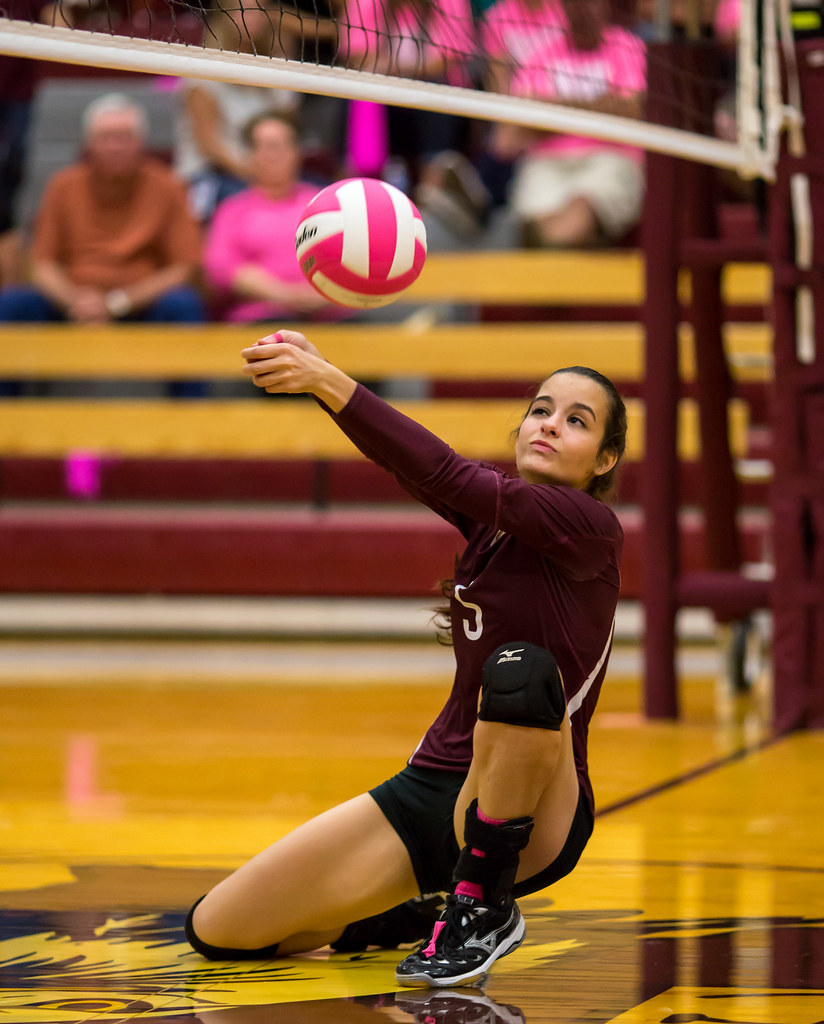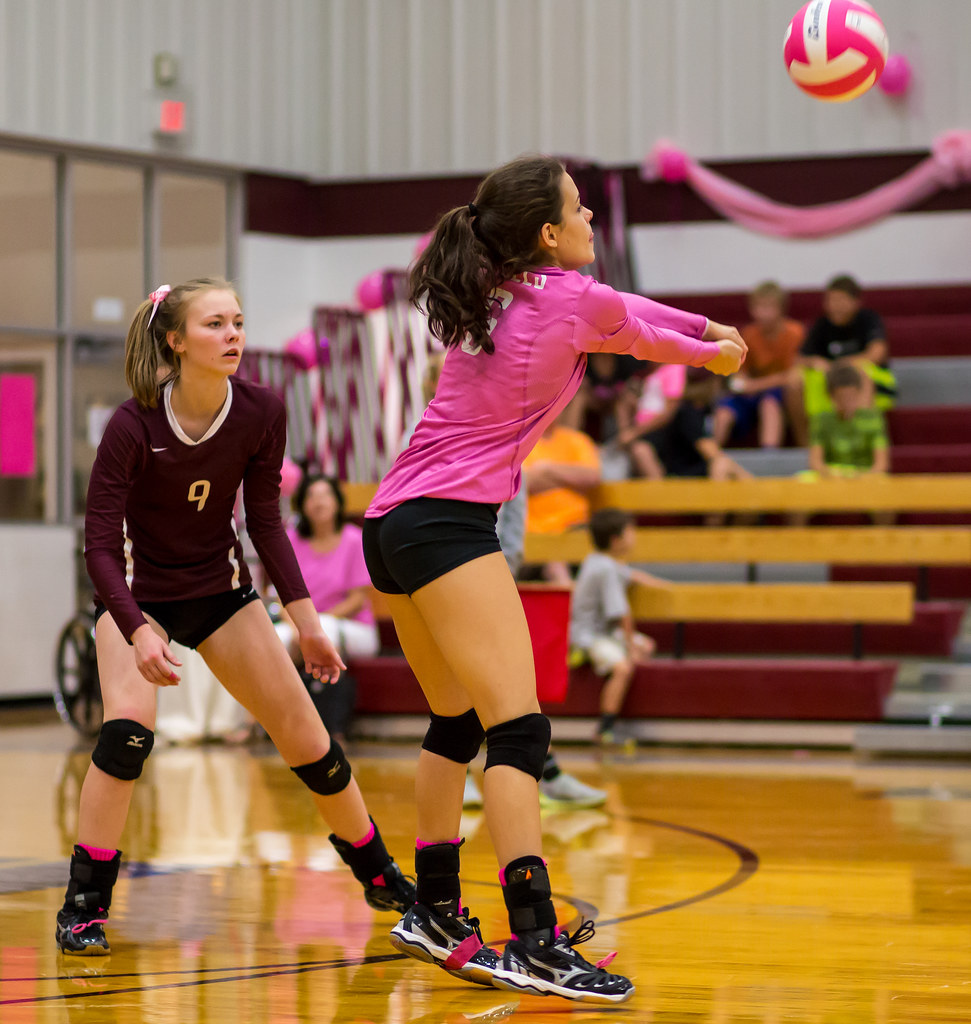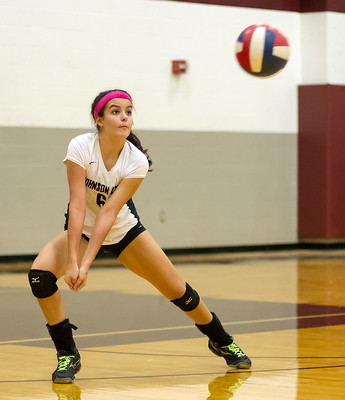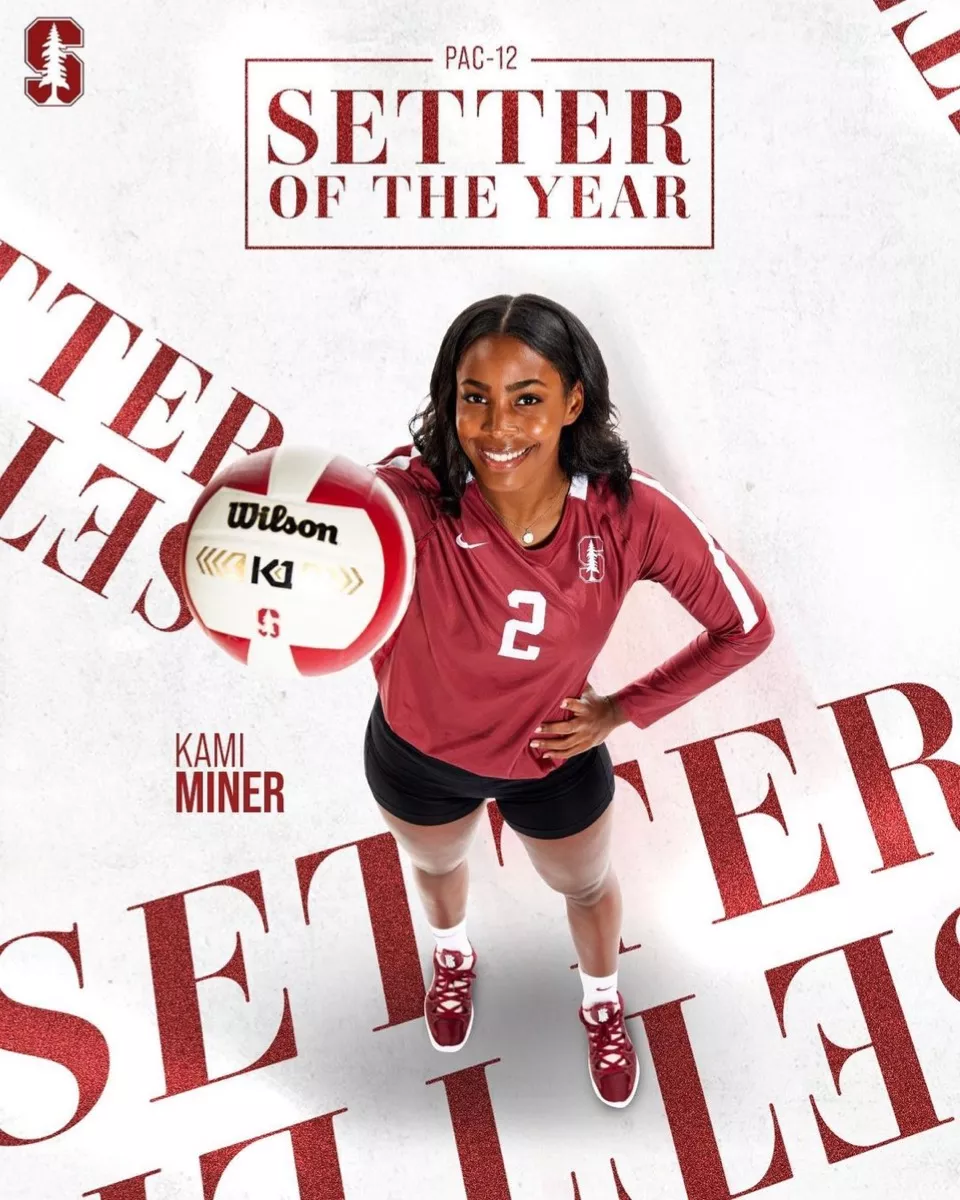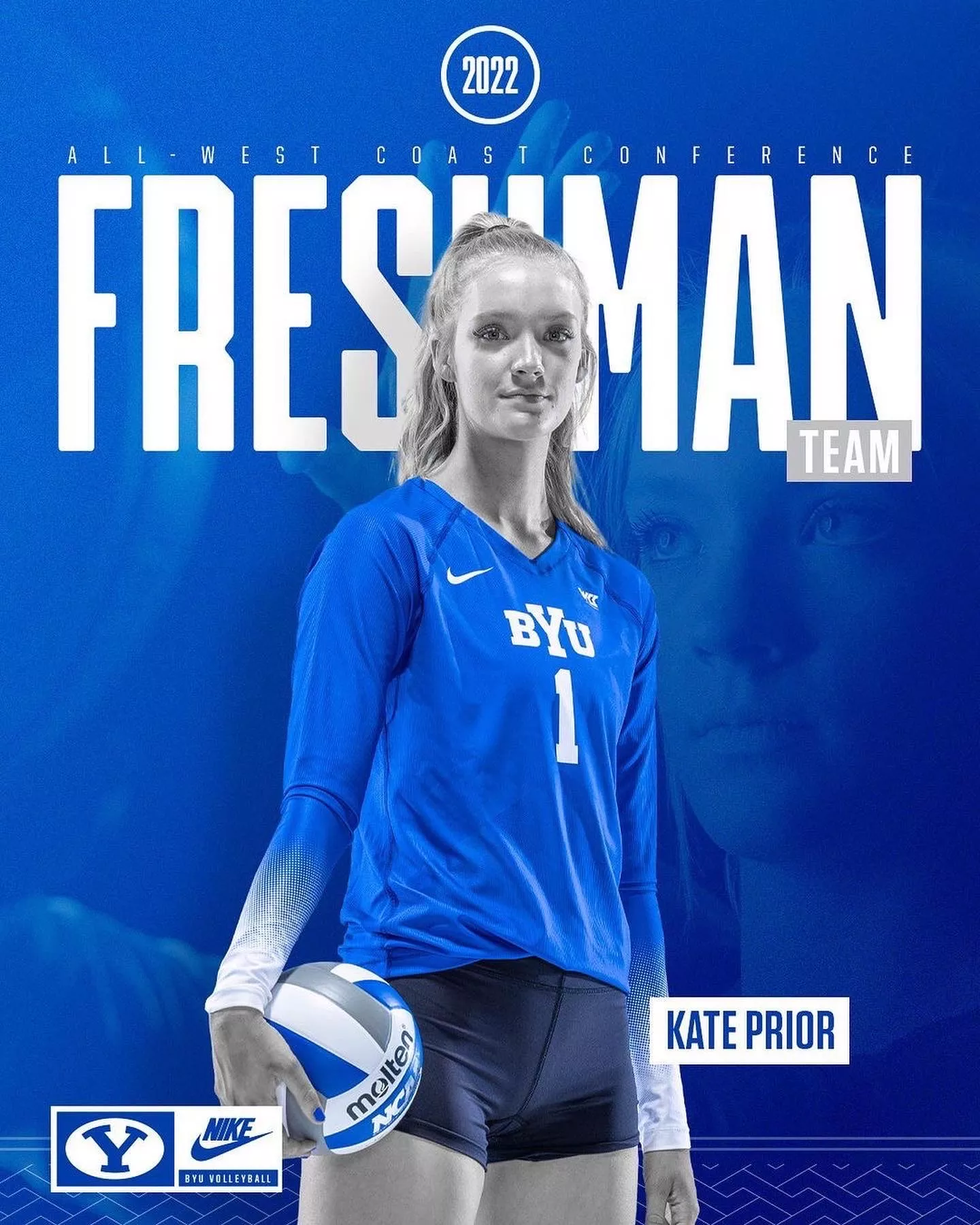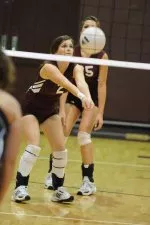- Improve Your Volleyball with Coach April
- Role Of Libero In Libero
 Dear Volleyball Mom,
Do You Know What Sets My Private Volleyball Training Apart From Anyone In Vegas?
I invite You to read what my private volleyball training mission says before considering hiring me as a private volleyball coach because I'm not available for everyone.
Dear Volleyball Mom,
Do You Know What Sets My Private Volleyball Training Apart From Anyone In Vegas?
I invite You to read what my private volleyball training mission says before considering hiring me as a private volleyball coach because I'm not available for everyone.What is the Role of Libero in Volleyball The Back Court Specialist
The role of libero in volleyball is of a backrow specialist who goes in to pass, dig and serve for one of two players they can go in for without a substitution.
The libero volleyball player has specific qualities and specialized responsibilities in their defensive roles along with special rules created just for them.
Find out everything you need to know about the role of libero in volleyball including the who, what, when, where why on the pages below....
Libero Volleyball Player Responsibilities, Roles, Qualities and Rules
The libero volleyball player has specific qualities and specialized responsibilities in their defensive roles along with special rules created just for them.
What're the passing, digging and serving responsibilities and role of libero in volleyball?
The role of libero in volleyball includes passing, digging, and serving.
Let's dive into each of these responsibilities in more detail.
Passing: The Role of the Libero in Volleyball
The libero is one of two or three primary passers responsible for receiving the opponent's serve with a precise pass to the setter.
Liberos need to have excellent ball control skills and the ability to accurately deliver a clean pass to the target, allowing the setter to execute an effective offensive play.
The libero's passing ability is essential in maintaining a strong offensive game for their team.
Digging: The Role of the Libero in Volleyball
A libero's defensive abilities shines through their digging skills.
They are responsible for reading and anticipating the opponent's attacks, in order to be able to place themselves right in front of the path of the oncoming attacked ball that gets past their blockers, often diving or sprawling to save the ball from hitting the ground.
Liberos are agile and quick on their feet with quick reactive abilities in order to successfully dig powerful spikes and sharp hits, preventing the opponent from scoring.
Serving: The Role of the Libero in Volleyball
Although liberos may not serve as frequently as other players, they can still step up to serve during key moments in the game.
Their serves can vary from precise float serves to strategic jump serves, adding an extra element to their team's offensive arsenal.
A libero can go in for both of the middle blockers in the backrow but they can only serve for one of them.
Communication and Teamwork: The Role of the Libero in Volleyball
In addition to these specific responsibilities, liberos play a crucial role in communication and teamwork on the court.
They act as the defensive leader, guiding their teammates and organizing the backcourt defense.
Liberos also play an essential role in serve receive formations, anchoring the back row and providing stability for their team.
Their ability to control the tempo of the game through their passing and defensive skills is invaluable.
Remember, the responsibilities of a libero may vary depending on the team's specific strategy and the coach's preferences.
What're the libero's role in defensive strategies and their impact on overall team defense.
The Role of the Libero in Volleyball
The libero plays a crucial role in the defensive strategies of a volleyball team, by contributing significantly to the overall team defense.
Their specific position and skill set allow them to have a significant impact in this aspect of the game.
Here's a breakdown of the libero's role and their impact on team defense:
1. Defensive Leader: The Role of the Libero in Volleyball
The libero often takes on the role of the defensive quarterback on the court leading in the backcourt communication with their teammates, providing instructions, guidance, and organizing the team's defensive formations.
Through their vocal leadership and knowledge of the game, liberos ensure that the team is positioned effectively to defend against the opponent's attacks.
2. Reading and Anticipating: The Role of the Libero in Volleyball
One of the libero's key strengths is their ability to read the game and anticipate the opponent's offensive plays.
They analyze the opposing team's tendencies and positioning, enabling them to position themselves optimally to dig and receive attacking shots.
By anticipating the opponent's moves, the libero can make timely defensive actions, reducing the effectiveness of their attacks.
3. Diving and Digging: The Role of the Libero in Volleyball
The libero is known for their exceptional diving and digging abilities.
They are typically the first line of defense, using their agility and reflexes to save the ball from hitting the ground.
The libero's quick reactions and precise technique in digging prevent potential scoring opportunities for the opponent, keeping the team in the rally and disrupting the opponent's offensive flow.
4. Serve Receive Specialist: The Role of the Libero in Volleyball
Liberos excel in serve receive with their consistent and accurate passing which enables the setter to run the team's offensive plays effectively.
By providing consistently accurate passes, the libero plays a vital role in maintaining control during serve receive, facilitating smooth transitions from defense to attack.
5. Anchoring The Defense: The Role of the Libero in Volleyball
The libero serves as a defensive anchor for the team, covering a large portion of the court and filling gaps in the defense.
Their quickness, fast footwork and technical defensive range allow them to cover ground swiftly, making dig attempts and extending rallies.
With their defensive prowess, the libero provides a sense of stability and confidence to the team, motivating their teammates to give their best defensive effort.
6. Energizing the Team: The Role of the Libero in Volleyball
Beyond their defensive contributions, liberos have the ability to energize the team through their hustle and relentless effort.
Their defensive plays, such as spectacular digs and fearless dives, inspire and motivate their teammates, creating a positive atmosphere and camaraderie on the court.
This energy translates into an exciting and elevated defensive performance and a cohesive team defense.
Their leadership, anticipation, diving, and passing abilities contribute to a strong defensive foundation, enabling the team to withstand opponents' attacks and execute effective counter-offensive plays.
The libero's defensive prowess fuels team spirit and sets the tone for a unified and resilient defensive effort.
Volleyball Libero Facts Defensive Rules, Responsibilities and History
The volleyball libero is a specialist in digging, passing and playing in the backcourt who wears a contrasting color jersey and has defensive responsibilities.
The libero's positioning and movements in relation to other players during gameplay:
The Role of the Libero in Volleyball
The libero's positioning and movements on the volleyball court are crucial for optimizing their defensive capabilities and coordinating with other players.
Let's explore how the libero positions themselves and interacts with teammates during gameplay:
1. Backcourt Position:
The libero operates in the backcourt, with their base position just behind the ten-foot line. This allows them to use their defensive skills effectively and cover a larger area of the court.
By positioning themselves in the backcourt, the libero is ready to receive serves, dig attacks, and provide reliable defensive support.
2. Coordinate with Middle Blockers:
The libero works closely with the team's middle blockers, especially during rotations.
As the middle blockers transition from the front row to the back row, the libero often replaces them on the court, seamlessly maintaining a strong defensive presence.
This coordination ensures that the team always has a capable defender in the backcourt.
3. Control the Back Row Defense:
With their exceptional range and agility, the libero takes charge of the back row defense.
They communicate and direct their teammates, ensuring proper positioning and coverage. This coordination helps establish a cohesive defensive strategy, with the libero orchestrating the movement and actions of other backcourt players.
What's A Libero in Volleyball And Why Was The Libero Position Created?
What's the role of libero in volleyball? The position was created because event organizers were looking to keep sponsor support high and make the men's game more exciting.
4. Respond to Setter's Calls:
The libero is responsive to the setter's calls and instructions. They position themselves strategically to provide a reliable passing target during serve receive, allowing the setter to execute effective offensive plays.
The libero's positioning and readiness to play a crucial role in facilitating smooth offensive transitions is crucial to the team's success.
5. Seamless Transitions:
The libero's movements on the court are characterized by their ability to seamlessly transition between defensive actions.
From receiving serves and making accurate passes to positioning themselves strategically outside of their blocker's shadow, they execute diving digs, and their agility and quick reflexes allow them to cover a wide range of the court efficiently.
Their ability to read the game and anticipate opponent's attacks aids in smooth transitions and keeps the team in control.
6. Communication with the Front Row:
While the libero primarily focuses on backcourt defense, they maintain communication with the team's front-row players.
This ensures effective coordination between the backcourt and front court, creating a solid defensive system that supports the team's overall gameplay strategy.
Do You Follow Me on Pinterest?
Follow me on Pinterest Volleybragswag to improve your game even faster!
I share alot of individual, partner and easy-to-do volleyball serving drills we do in class with my followers.
Many of these volleyball practice drills you can do at home by yourself or try at your next practice with your teammates.
If you're a B team or JV player trying to make varsity next year...your goal should be to complete 1000 reps a day of at least three of the basic skills on your own...volleyball passing, serving and setting should be at the top of the list.
The Role of Libero in Volleyball
Where do you need to go now?
Here are three options:
- Learn more about the volleyball information on Improve Your Volley.com in the Related Links below.
- Follow the suggested reading on our Sitemap page Learning How To Play (Sitemap)
- Or visit the pages in the Information section in the drop down menu at the top of the page.
SUSCRIBE
To My Email Newsletter Below!
From Lady Vol to Legend: Coach April Produces Powerful Passionate Players...is that you?
What Are You Looking For?

Hi there!
Thanks for stopping by. Hope you learned something today that will help you reach your volleyball goals.
Be sure to subscribe to my email newsletter so you can learn more each week!
Stay strong! Stay motivated!
-Coach April

SUSCRIBE
to my email newsletter below!
Vegas Volleyball's Unsung Heroes: Celebrating Moms with Peace Love Volleyball Shirts
Ready to energize your volleyball mom journey?
Subscribe to my 'Producing Powerful Passionate Peaceful Players' email list above on ImproveYourVolley.com.
You'll receive energy-boosting tips, exclusive insights from me, Coach April Chapple on maintaining momentum in volleyball.
Let's power up the Vegas volleyball scene together!
Recent Articles
-
5 Volleyball Passing Tips: Essential Techniques to Fix Common Mistakes
Apr 21, 25 05:34 PM
These are 5 volleyball passing tips beginner players need to see that show how to improve your serve receive skills -
5 Beginner Passing Drills Volleyball Players Should Know
Apr 21, 25 04:36 PM
These are 5 beginner passing drills volleyball players need to see that show how to improve your serve receive skills -
Basic Volleyball Passing Drills For High Floater Serves That Rise Up
Apr 21, 25 12:57 PM
With these basic volleyball passing drills remember to anticipate where the ball will land, keep elbows straight, stay in athletic stance, angle your platform
